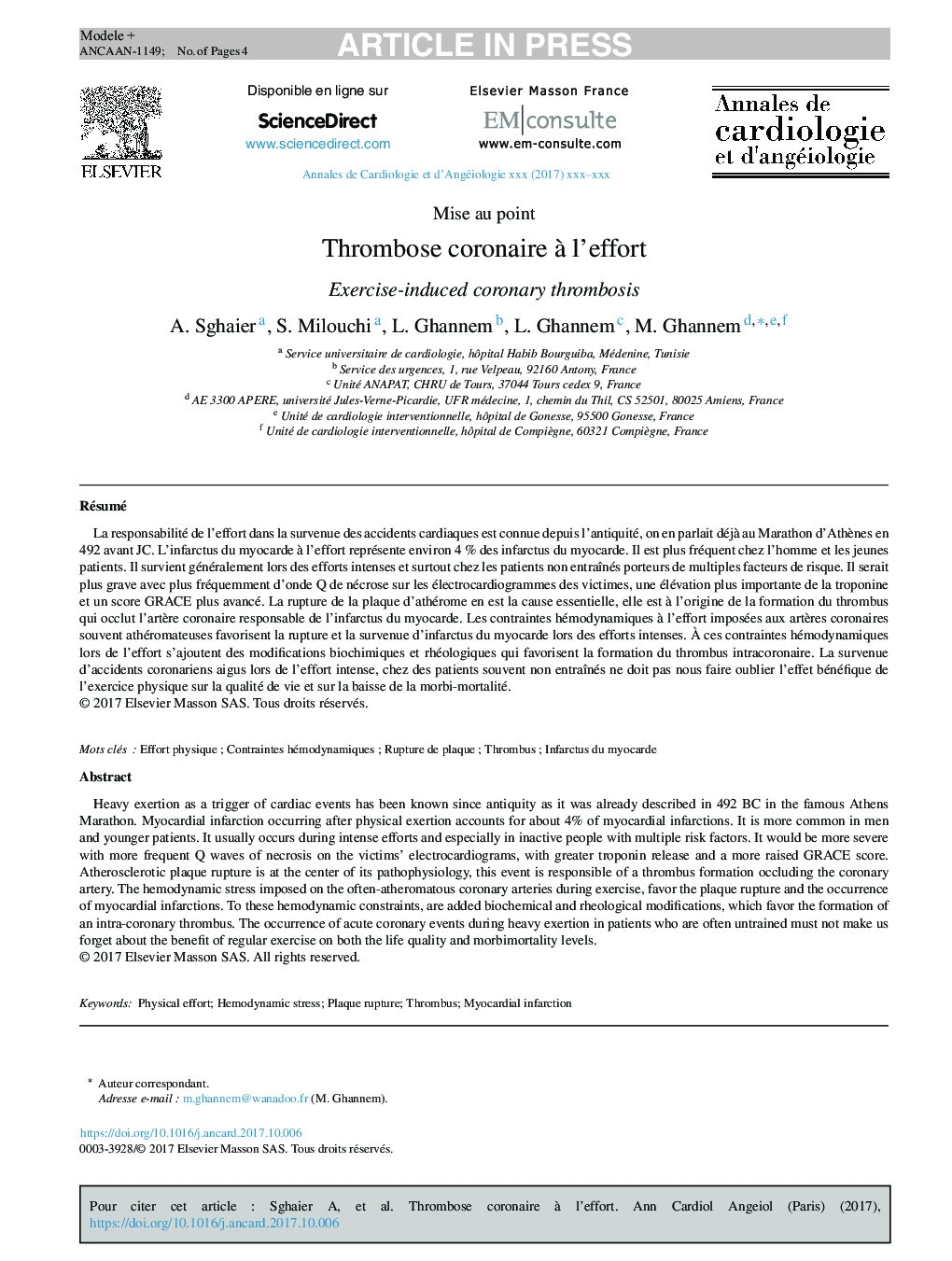| Article ID | Journal | Published Year | Pages | File Type |
|---|---|---|---|---|
| 8652300 | Annales de Cardiologie et d'Angéiologie | 2017 | 4 Pages |
Abstract
Heavy exertion as a trigger of cardiac events has been known since antiquity as it was already described in 492 BC in the famous Athens Marathon. Myocardial infarction occurring after physical exertion accounts for about 4% of myocardial infarctions. It is more common in men and younger patients. It usually occurs during intense efforts and especially in inactive people with multiple risk factors. It would be more severe with more frequent Q waves of necrosis on the victims' electrocardiograms, with greater troponin release and a more raised GRACE score. Atherosclerotic plaque rupture is at the center of its pathophysiology, this event is responsible of a thrombus formation occluding the coronary artery. The hemodynamic stress imposed on the often-atheromatous coronary arteries during exercise, favor the plaque rupture and the occurrence of myocardial infarctions. To these hemodynamic constraints, are added biochemical and rheological modifications, which favor the formation of an intra-coronary thrombus. The occurrence of acute coronary events during heavy exertion in patients who are often untrained must not make us forget about the benefit of regular exercise on both the life quality and morbimortality levels.
Related Topics
Health Sciences
Medicine and Dentistry
Cardiology and Cardiovascular Medicine
Authors
A. Sghaier, S. Milouchi, L. Ghannem, L. Ghannem, M. Ghannem,
